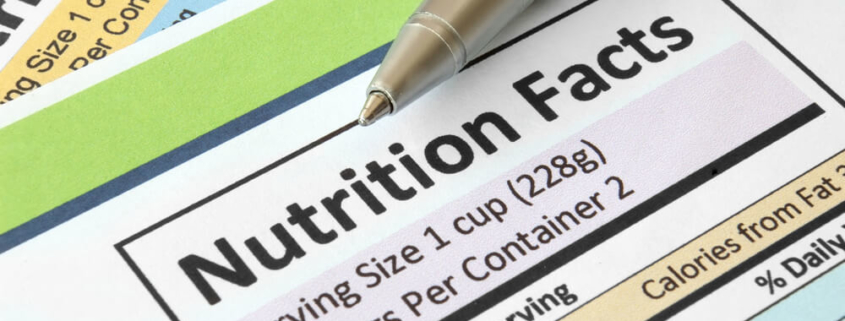What Does a Food Label Really Tell You?
The information printed on food labels might seem excessive and sometimes overwhelming. But it’s intended to help consumers make more informed choices about their food. The front, back, and sides of the food packages contain information about the food’s contents and origin. But all of those terms, figures, and percentages can sometimes lead to even more confusion.
The reasons we read food labels can vary as well. You might want to limit your intake of calories or sugar with weight loss in mind. You might also have a serious health concern, such as a peanut allergy. Or you may just want to do business with brands that are more sustainable. Whatever your goals, here is how you can interpret much of the information printed on food labels.
The Nutrition Facts Label
The first label most people look at is the Nutrition Facts Label, which is overseen by the U.S. Food and Drug Administration. The label was first mandated in 1990 and has undergone revisions since based on public and scientific input. The information you will get from this label includes:
- Serving Information — How many servings are in the container and the size of each serving. Many serving sizes are surprisingly small.
- Calories — How many calories you get from one serving. This is an important point to consider because many people consume more than a serving of food, so calories can quickly add up.
- Nutrients — A list of key nutrients that affect your health (good and bad) and the % of Daily Value included in just one serving of the item. It’s a good idea to compare the %DV for nutrients in similar products to eliminate those with things you want less of, like sodium, and include items with good nutrients, like vitamin D or calcium.
Nutrients to Get Less Of
Sodium, saturated fat, and added sugars are nutrients associated with negative health effects, and also ones we tend to overconsume. Eating too much sodium and saturated fat, for instance, is associated with things like high blood pressure and cardiovascular disease. Consuming too much added sugars makes it challenging to stay within daily recommended calorie limits.
Total Sugars vs. Added Sugars
Nutrition labels will list Total Sugars and Added Sugars. There’s a difference. Some nutritious foods, like strawberries and milk, contain natural sugars. They have a sweet taste, making them attractive choices. But added sweeteners, like syrup, can significantly increase the calories per serving of an item.
Nutrients to Get More Of
Vitamin D, dietary fiber, iron, calcium, and potassium are nutrients listed on the Nutrition Label that Americans generally don’t get enough of. Getting the recommended daily value of these items can reduce the risk of developing high blood pressure, anemia, osteoporosis, and other health issues.
Side and Back-of-Package Labels
Ingredients List
The FDA also oversees the ingredients list on food labels. Ingredients must be listed in order of prominence by weight. And common terms may be added next to more unfamiliar names to provide clarity.
Allergy Information
According to federal law, eight major food allergens must be listed on the package near the ingredients list. These are milk, peanuts, wheat, shellfish, fish, soybeans, eggs, and tree nuts. Sesame will be added to the list in 2023.
Freshness Dates
There should also be a “sell by,” “use by,” or “best if used by” date on the package. These dates aren’t required by federal law, but some states have their own guidelines.
Front of Package Labels
Even though this is the first thing many consumers see as they walk through the grocery store, this part of the label is more branding than anything else. However, many food makers will place some graphics and symbols on the front of their labels that can be helpful.
If you’re looking for organic, gluten-free, or sustainable choices, the label might have a symbol that indicates these options. Many food items will also make claims, such as being “reduced fat,” “low sodium.” or “high fiber.” These claims aren’t regulated, so be sure to verify the information by reading the official Nutrition Facts Label on the back.
Ask Your Local Grocer for Help Deciphering Food Labels
Understanding what’s in the food you buy is essential to stocking a kitchen full of nutritious items. If you’re not sure how to interpret a food label, ask your local grocer for some assistance.
Nick’s of Calvert is your hometown grocery store. For over 50 years, we have been serving the Southern Maryland community with high-quality products and exceptional customer service. Visit us today, and we’d be happy to provide any assistance you need.

 What Does a Food Label Really Tell You?
What Does a Food Label Really Tell You?

 Fourth of July Celebration – Choosing the Right Beer
Fourth of July Celebration – Choosing the Right Beer
Leave a Reply
Want to join the discussion?Feel free to contribute!